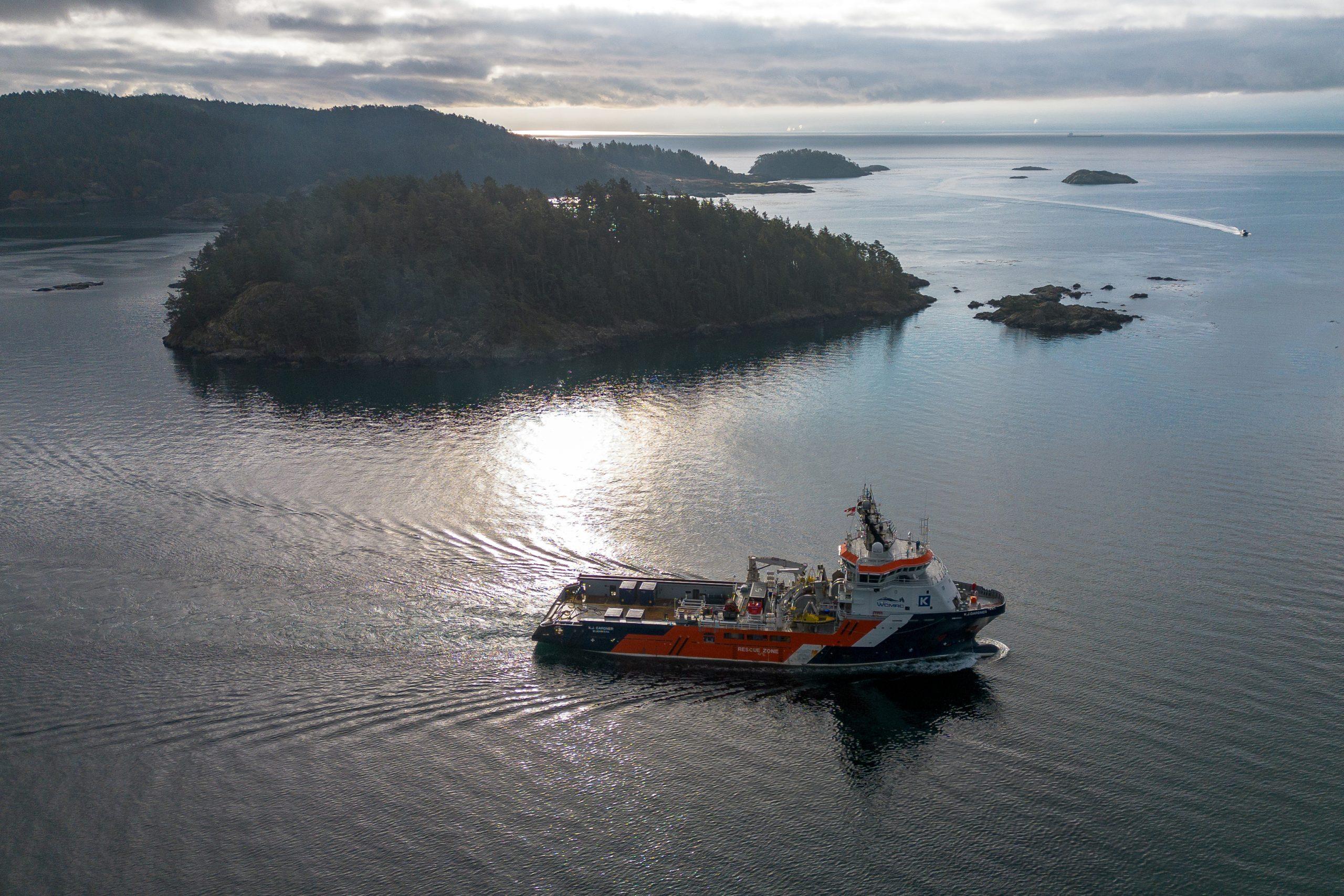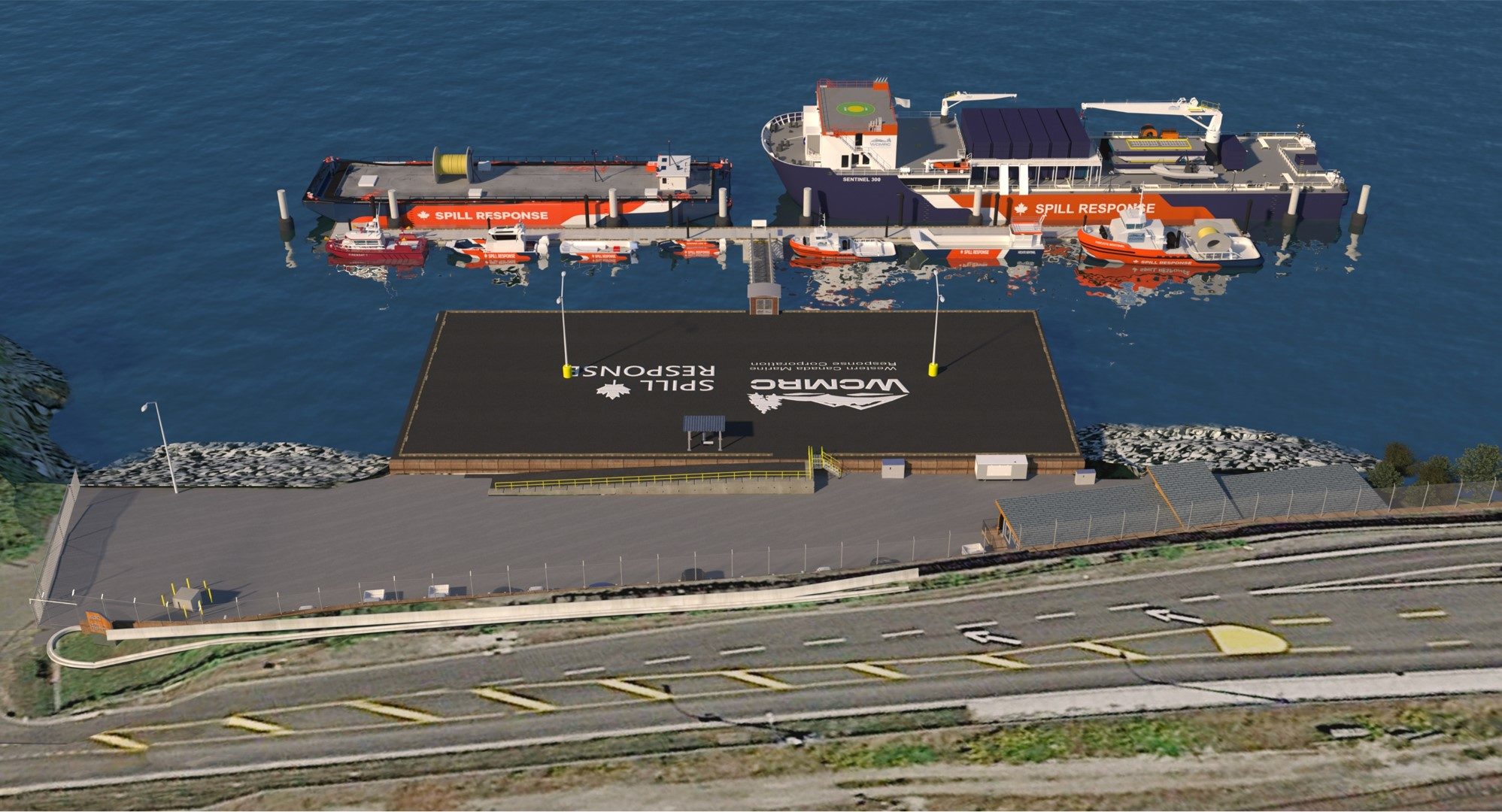Protecting Canada’s waterways is a key priority for the Trans Mountain expansion project, which has doubled marine spill response capacity on the west coast.
It’s the largest expansion of oil spill response capability in Canadian history.
The 1,150-kilometre pipeline project, which runs from Edmonton to an export terminal at Burnaby, B.C., went into commercial service on May 1, significantly increasing Canada’s ability to ship oil to global customers.
The Trans Mountain system has operated for over 70 years without a single spill from marine tanker operations. But with an increase in tanker traffic, a main focus of the expansion was enhancing marine safety.
Michael Lowry, spokesman for Western Canada Marine Response Corporation (WCMRC), said everything is in place now and “we’re ready to go” to respond to any incidents, large or small, on the coastline of British Columbia.
The WCMRC’s geographic area of response covers all 27,000 kilometres of western Canada’s coastline, extending to the 200-nautical mile limit.
“We spent a lot of time when we were first doing this expansion going out to the communities – Indigenous communities, coastal communities, Gulf Islands, all those places – and asking people about what their concerns were,” Lowry said.
“We heard that people, communities and First Nations wanted to be more involved in spill response. They wanted to have equipment closer to where their territories and their communities were. And they wanted it to be just a more transparent, inclusive process. I think a number of things have happened since then that have gone a long way to address those concerns.”
The number of WCMRC vessels has doubled from 44 to 88. Today, the organization also employs just over 200 people.
Canada’s largest-ever marine spill response vessel is now on the coast of British Columbia. The vessel – as long as a ten-storey building and as heavy as about 50 Boeing 737 airliners – will reduce response time to within six hours, compared to the current turnaround time of up to three days.
The K.J. Gardner, named after WCMRC president Kevin Gardner, who led the capacity expansion, is based at Beecher Bay on Vancouver Island and is operated in partnership with the Sc’ianew First Nation.

It was one of the final pieces of the $150-million marine spill response expansion program.
Peter Luckham is chair of the Islands Trust Council, a government-mandated organization tasked with preserving and protecting over 450 Islands in the Salish Sea.
He said the amount of work, effort and resources that have come into play through the WCMRC, which is funded by industry, is significant.
“We’re in much better shape than we have been,” he said, adding that the impact on the socioeconomic environment of the southern Gulf Islands would be huge in the unlikely case of a major incident.
“But that said, WCMRC is very well prepared.”
Sc’ianew First Nation (Beecher Bay) chief Russ Chipps, in a video posted by Trans Mountain, said it was important for the Nation to participate as an equal partner in the response plan.
“We started having a growing relationship, sort of a mutual understanding of what’s going on,” he said.
“When we discovered that we were 72 hours away from a spill response, the only thing I had in the toolbox to use to look over the Bay . . . was a phone call. Now we’ve got a full toolbox with ships, trained people, the science around how to protect and I guess the education on how to deploy those booms and when to deploy those booms.”

WCMRC, and its predecessor Burrard Clean, have been around since the mid-1970s.
When Trans Mountain indicated it wanted to expand the existing pipeline, Lowry said one of its first tasks was to determine how best to protect sensitive coastal environments with an increase in tanker traffic.
Lowry said due to the uncertain nature of marine spills, the company dialed in on things it could control and set to improve those.
“And really what that is in our business is your response times, because the quicker you can get to a leaking vessel, the quicker you contain it and the more it can mitigate the damage and the impact,” he said.
“That’s really the name of the game here. It’s minimizing the possible impact and then cleaning it up.”
The unaltered reproduction of this content is free of charge with attribution to Canadian Energy Centre Ltd.
